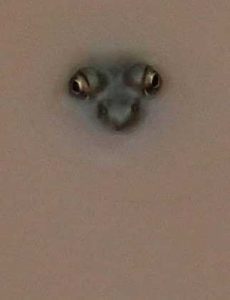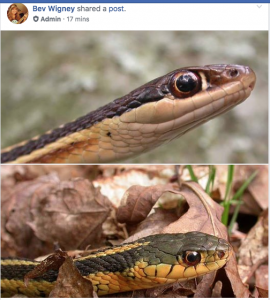Turtle Patrol Nova Scotia
Closed Facebook Group. “The Turtle Patrol’s goal is to help our native turtles survive in the wild, to share turtle news and talk turtles with like minded individuals.”
Underwater Photography: Life in Vernal Pools
by Steven David Johnson Spring 2021 in northernwoodlands.org. Cites this e-book: Vernal Pools: Documenting life in temporary ponds
NS Museum: Reptiles and & Amphibians Collections
Quick links to descriptions of all species, with photos.
Sounds and Sights: Amphibians
(This website)
Snapping turtles more common in Cape Breton than once thought
SHARON MONTGOMERY-DUPE CAPE BRETON POST/CH July 24, 2018
An Innovative Underpass Keeps Turtles Off The Highway. It’s Saved Dozens From Becoming Roadkill
By Rob Mentzer on www.wpr.org/ . July 10, 2019
Bev Wigney on differences between Garter Snake and Ribbon Snake
After you’ve seen enough of both species, you’ll recognize them at a glance, but I find it helpful to know them by their heads. I would describe the Ribbon snake as being kind of bug-eyed — the eyes look a lot bigger in relation to the shape of the head. Also, look at the scales surrounding the eye – they are different in shape. The scales in front of the eye on a Ribbon really dip inward and are very light coloured. On a Garter, they are flatter and don’t dip inward. The head shape is different too. The Ribbon looks more pointed and flatter headed – the jaws always look longer to me. The Garter head looks sort of boxier with a somewhat shorter nose – at least, that’s how I’d describe the difference. The head of a Ribbon snake looks larger than the “neck” – its body looks slimmer. The Garter snake’s head seems not too much larger than the body, which looks somewhat thicker than the Ribbon snake. Many of our Garter snakes here in Nova Scotia are brown with checkerboard patterns. I’ll post photos of one of those sometime soon.
Mammals
Antlers of the East: Tracking the Decline of the Atlantic Caribou
Zack metcalfe, Nov 6, 2018
List of Mammals of Nova Scotia
with synonyms used in the literature relating to Nova Scotia, including Mi’kmaw names for Mammals
Andrew Hebda, NS Museum 2014
Natural History of Nova Scotia: Land Mammals (PDF)
See these pages: T11.8 Land Mammals (Page 250), T11.9 Carnivores (Page 257), T11.10 Ungulates (Page 259), T11.11 Small Mammals (Page 262)
Evidence for the Historical Occurrence of Wolves (Canis spp.) in Nova Scotia, Canada
Paper by Andrei N. Whitaker & Karen F. Beazley . The Canadian Field-Naturalist Vol 131, pp 32-36 (2017). ABSTRACT: Although once common across the entire North American continent, wolves (Canis spp.) have been extirpated from most of their former territory. The historical occurrence and persistence of wolves in Nova Scotia has been a subject of debate because of comments on the wolf’s rarity in early settler accounts and the absence of physical specimens. By consulting historical documents of European settlers, the Mi’kmaw lexicon, and fur trade records, we found evidence for the presence of a wolf population in Nova Scotia (which included the territory of New Brunswick before 1784) at European contact and persisting until the early 20th century.
Moose in the News in Nova Scotia
Post on this website, Sep 1, 2017
Distribution of the Eastern Pipistrelle (Perimyotis subflavus) in Southwest Nova Scotia Relative to Landscape Factors
Lesley J. Farrow MSc thesis . SMU 2007
Bob Bancroft in Saltscapes
Otter in the Water
In Awe of Eagles
The elusive eastern cougar
Turning kids into nature
Taking Stock: How are our wildlife species holding up against an onslaught of habitat degradation?
A Different Drummer
Track Tales
Twists in an Old Tale
On Coyotes “Relative newcomers to the region—with habitat changes in North America, such as land clearing, prairie coyotes expanded their range. They arrived in Atlantic Canada in the 1970s.”
A Bird’s Eye View
Eastern Chipmunks
The Long Sleep


